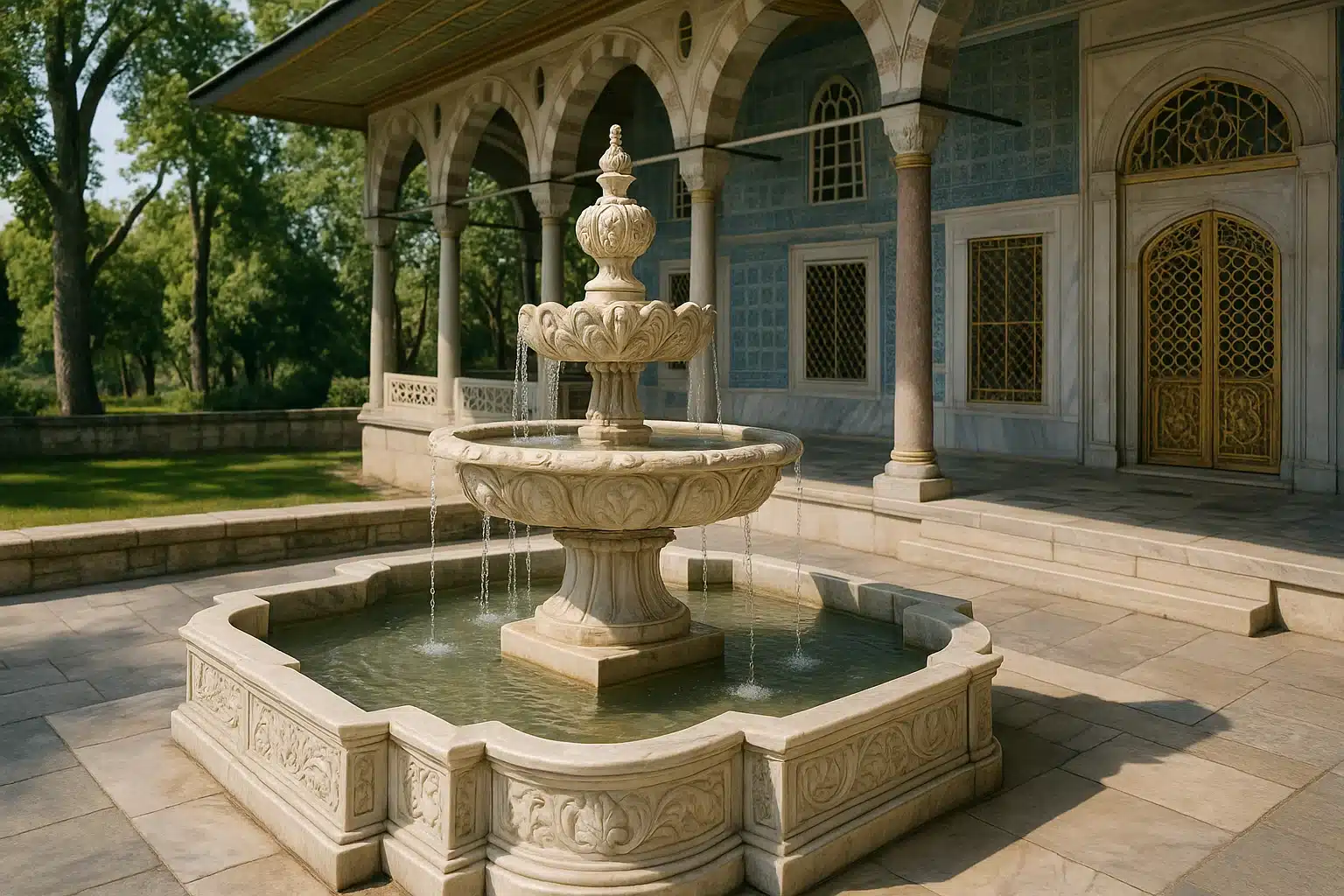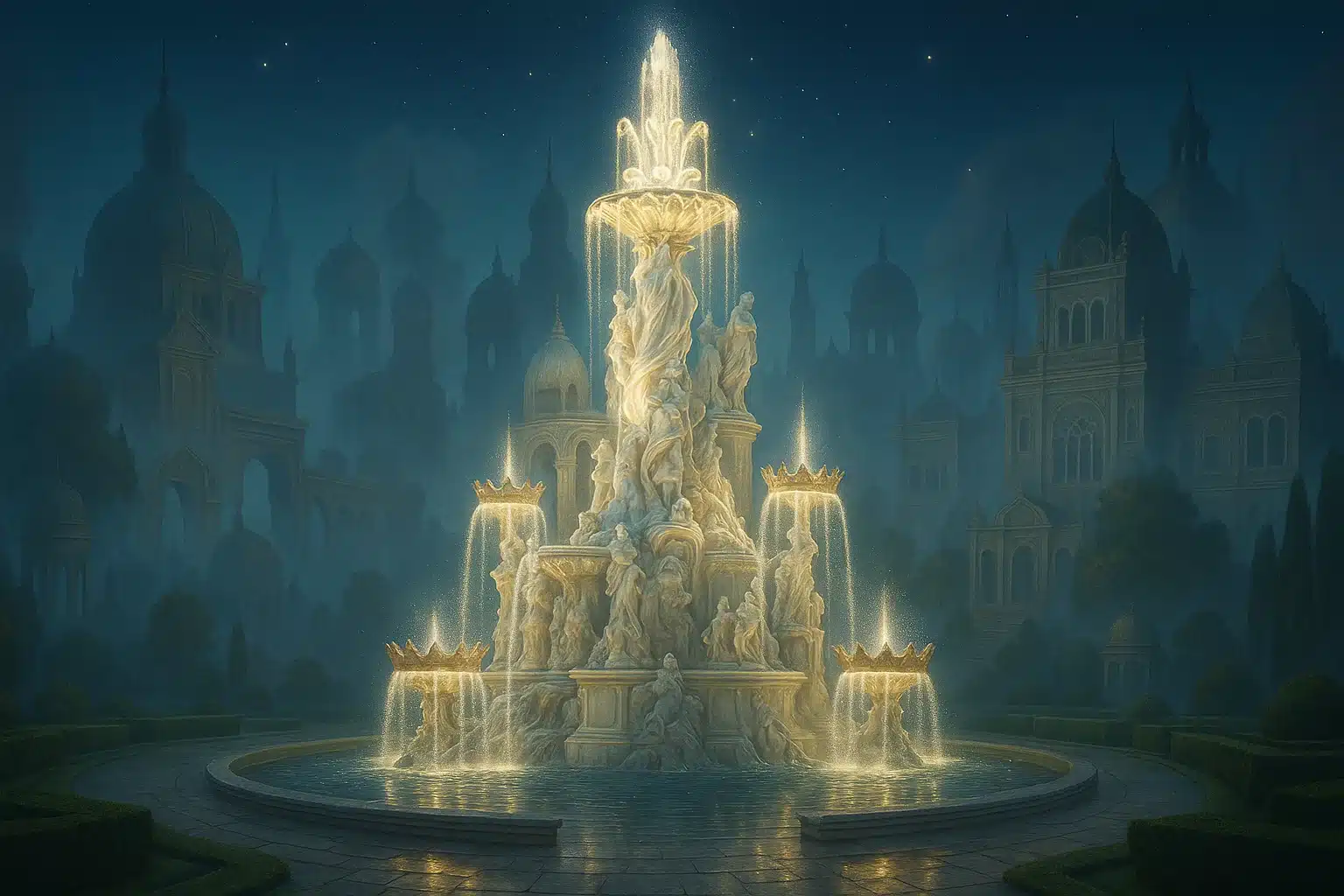Introduction: The Majesty of Palatial Fountains
Throughout history, fountains have been far more than decorative elements; they’ve symbolized power, prosperity, and artistic achievement. In royal residences, fountains hold a unique place, serving not only as expressions of architectural brilliance but also as reflections of a kingdom’s cultural and political identity.
Palaces across the world, from Versailles in France to Peterhof in Russia, are defined by their fountains. These water features showcase cutting-edge hydraulic engineering for their time, intertwine with mythological symbolism, and leave lasting impressions on visitors centuries later. This blog takes you on a journey through iconic royal residences, where fountains are not merely adornments but statements of empire, innovation, and timeless beauty.
Versailles Palace, France: The Pinnacle of Fountain Design
The Palace of Versailles is synonymous with grandeur, and its fountains are at the heart of this opulent identity. Commissioned by King Louis XIV, also known as the Sun King, the gardens and fountains were designed to display the monarchy’s absolute power and divine right to rule.
The Grand Canal and Hydraulic Mastery
The fountains of Versailles were not just decorative; they represented an engineering marvel of the 17th century. The palace’s gardens host more than 50 fountains, each requiring intricate hydraulic systems that drew water from the surrounding rivers and reservoirs.
The Grand Canal, stretching over a mile, served as both a water supply and a stage for royal pageantry, including gondola rides and naval demonstrations.
Mythology and Symbolism
Fountains such as Apollo’s Fountain embodied Louis XIV’s persona as the Sun King. The depiction of Apollo, the sun god, reinforced the king’s divine status, while the theatrical water jets symbolized the radiance of his power.
Enduring Legacy
To this day, the Versailles fountains inspire awe, especially during the Grandes Eaux, a seasonal event where the fountains are set to music, echoing the Baroque grandeur of the 17th century.
Peterhof Palace, Russia: The Russian Versailles
Nicknamed the “Russian Versailles”, Peterhof Palace near St. Petersburg was built by Peter the Great to rival European courts. Its fountains are considered among the most spectacular in the world.
The Grand Cascade
The Grand Cascade is Peterhof’s centerpiece. Comprising 64 fountains and over 200 statues, the cascade dramatically descends from the palace towards the Gulf of Finland. At its heart is the Samson Fountain, depicting Samson tearing open a lion’s jaws, a symbol of Russia’s victory over Sweden during the Great Northern War.
Ingenious Water System
Unlike Versailles, Peterhof’s fountains operate without pumps. Instead, a gravity-fed system channels water from natural springs and reservoirs situated miles away. This innovation reflects the empire’s ability to merge natural resources with artistry.
Imperial Symbolism
Peterhof’s fountains conveyed imperial might and Russia’s arrival as a European superpower. Their golden statues, dramatic jets, and theatrical placement turned the gardens into an open-air stage of dominance.
Alhambra, Spain: The Marriage of Water and Moorish Art
The Alhambra in Granada is a royal residence where water transcends functionality and becomes an essential element of Islamic art and philosophy. Built during the Nasrid dynasty, the palatial complex integrates fountains into courtyards, symbolizing paradise and the divine.
Court of the Lions
The most iconic fountain at the Alhambra is the Fountain of the Lions, located at the heart of the Court of the Lions. Resting on twelve marble lions, the fountain embodies strength, courage, and authority. The surrounding channels distribute water throughout the courtyard, blending aesthetic elegance with engineering ingenuity.
Spiritual Symbolism
For the Moors, water was a sacred element symbolizing life, purity, and eternity. The placement of fountains in courtyards and halls mirrored Quranic depictions of paradise, with flowing streams and shaded gardens.
Lasting Influence
The Alhambra’s fountains remain some of the most studied examples of Moorish hydraulic design, influencing architecture in Spain and beyond. They showcase how royal residences could blend religious symbolism with refined artistry.
Schönbrunn Palace, Austria: Baroque Elegance in Water
The imperial summer residence of the Habsburg dynasty, Schönbrunn Palace in Vienna, is renowned for its harmonious gardens adorned with fountains that exemplify Baroque artistry.
Neptune Fountain
At the foot of the Gloriette hill lies the Neptune Fountain, completed in the 1780s. Depicting Neptune with his trident, surrounded by sea gods and nymphs, the fountain symbolizes Austria’s maritime ambitions and imperial authority.
Integration with the Landscape
The fountains of Schönbrunn were not standalone features but carefully integrated into the vast Baroque garden plan. They were designed to guide the eye along axial views, emphasizing the harmony between architecture, landscape, and sculpture.
Cultural Significance
Beyond their aesthetic function, the fountains reflected Enlightenment ideals, where art, science, and nature converged to express imperial power in a more refined, intellectual manner.
Buckingham Palace and Royal Parks, United Kingdom
While Buckingham Palace itself is less known for grand fountains, London’s royal residences and adjacent parks feature iconic water displays tied to royal identity.
Victoria Memorial Fountain
In front of Buckingham Palace stands the Victoria Memorial, flanked by fountains and water basins. Erected in honor of Queen Victoria, the monument is surrounded by allegorical statues symbolizing Truth, Justice, and Motherhood. The fountains here act as ceremonial framing for state events and royal processions.
Kensington Palace Gardens
Nearby Kensington Palace, once home to Queen Victoria and Princess Diana, features elegant fountains integrated into its sunken gardens, providing spaces of tranquility amid the bustle of London.
The Role of Ceremony
For the British monarchy, fountains serve less as displays of hydraulic engineering and more as ceremonial spaces that reinforce continuity and tradition in the public eye.
Mysore Palace, India: A Blend of Royal Grandeur and Tradition
In southern India, the Mysore Palace, residence of the Wadiyar dynasty, is a striking example of Indo-Saracenic architecture. Its gardens and fountains fuse Indian tradition with colonial influences.
Illuminated Fountains
The palace grounds feature musical and illuminated fountains, creating a dramatic spectacle, especially during the annual Dasara Festival. These water displays highlight both technological advancement and cultural celebration.
Symbolism in Indian Context
Unlike European palaces, where fountains often symbolized power or myth, Mysore’s fountains emphasize celebration, spirituality, and the integration of art with performance. They continue to serve as living cultural symbols tied to regional identity.
Other Notable Royal Fountains

- Topkapi Palace, Istanbul – The Ottoman sultans’ residence, Topkapi Palace, is adorned with delicate marble fountains that provided both function and beauty. Fountains in courtyards served ablution purposes while symbolizing purity and abundance.
- Caserta Palace, Italy – Inspired by Versailles, the Royal Palace of Caserta features a grand fountain complex with mythological themes. The Fountain of Diana and Actaeon and the Fountain of Venus and Adonis epitomize Italian Baroque grandeur.
- Fontainebleau, France – Preceding Versailles, Fontainebleau housed Renaissance-style fountains that blended French and Italian influences, becoming templates for later European palatial designs.
The Cultural and Political Role of Royal Fountains
Status and Prestige
In every culture, fountains in royal residences were designed to overwhelm visitors with spectacle. Whether through soaring jets, gilded statues, or reflective pools, they symbolized royal control over natural resources — a visible manifestation of wealth and authority.
Technological Marvels
Fountains also represented cutting-edge technology of their time. From gravity-fed systems at Peterhof to the complex hydraulics of Versailles, mastery over water engineering was as significant as the artistic sculptures that adorned them.
Spiritual and Philosophical Dimensions
While European monarchs emphasized power, in places like the Alhambra and Topkapi Palace, fountains carried spiritual weight, reflecting beliefs in paradise, purity, and divine blessing.
Modern-Day Preservation and Tourism
Today, these royal fountains are not just relics of monarchic extravagance but vital cultural landmarks. Their preservation involves balancing historical authenticity with the demands of tourism. Events like Versailles’ Grandes Eaux Musicales or Mysore’s illuminated fountain shows bring these historical marvels to life for millions of visitors annually.
Moreover, fountains continue to inspire contemporary architects and landscape designers, proving that their allure is timeless.
Conclusion: Water as a Royal Signature
Royal residences across the world use fountains as signatures of identity, each unique yet universally symbolic. From Versailles’ theatrical Baroque jets to Alhambra’s spiritual waters, from Peterhof’s cascades of gold to Mysore’s illuminated displays, fountains define the palaces they adorn.
They are more than aesthetic additions; they are embodiments of cultural values, technological ingenuity, and royal power. In their flowing waters, one can trace the ambitions of kings, the artistry of sculptors, and the marvels of engineers.
The next time you visit a palace, pause by its fountain. You’re not merely looking at water, you’re witnessing centuries of history crystallized in art and motion.






